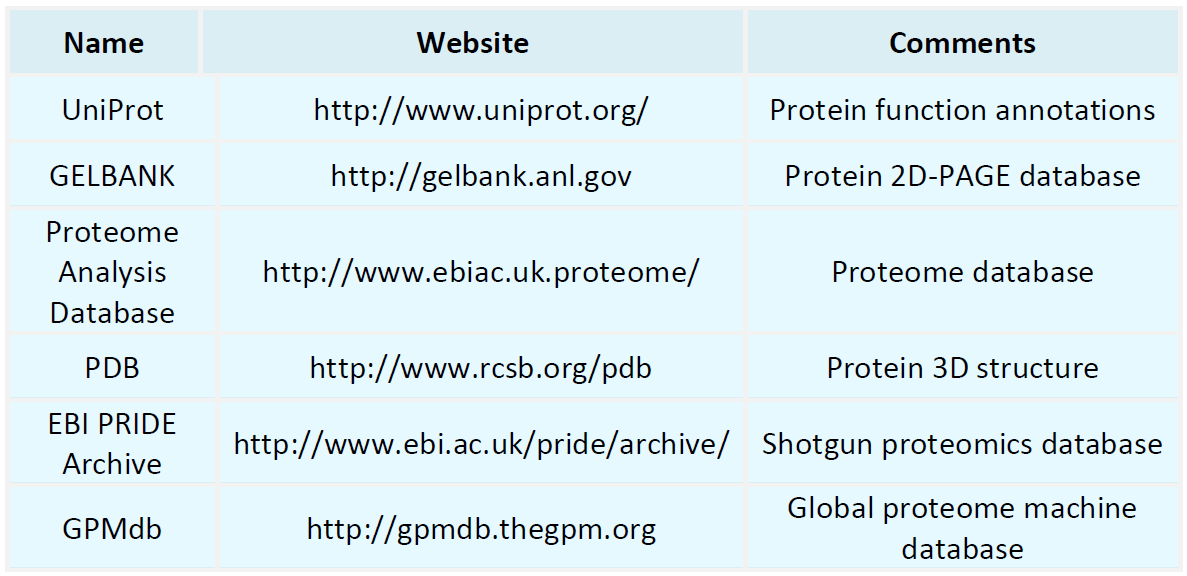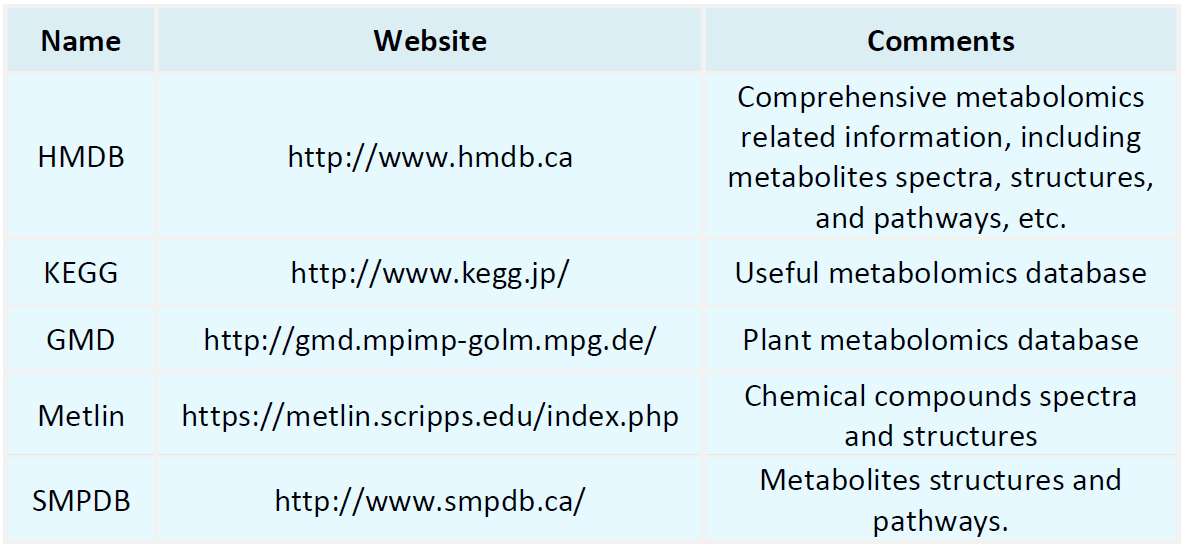Resources
Proteomics Databases

Metabolomics Databases

-
• Single Cell Nucleic Acid Sequencing
Single cell nucleic acid sequencing enables comprehensive genomic and transcriptomic analyses at the resolution of individual cells. This powerful technique allows scientists to uncover gene expression profiles across diverse cell types, providing insights into cellular function, state, and identity—even permitting the identification of rare cell populations. Its applications are broad, with one of the most impactful areas being cancer research. Tumors often exhibit significant cellular heterogeneity,......
-
• X-Ray Crystallographic Analysis
X-ray crystallographic analysis is a powerful technique used to elucidate the atomic and molecular structures of crystalline materials. In the realm of biology, the function of macromolecules such as proteins and nucleic acids is intricately linked to their three-dimensional conformation. By employing X-ray crystallographic analysis, researchers can obtain high-resolution structural information regarding conformational dynamics, active sites, and ligand-binding modes of these macromolecules, thereby e......
-
Proteomics and cancer research is an interdisciplinary field that integrates biochemistry, molecular biology, and bioinformatics to gain a deeper understanding of cancer initiation and progression through the study of protein structure, function, and interactions. Proteomics, the large-scale study of the complete set of proteins expressed in a biological system, offers a comprehensive view of both physiological and pathological cellular states. It is intimately linked to cancer research because protei......
-
• Single-Cell Transcriptomics Analysis
Single-cell transcriptomics analysis is designed to elucidate the complexity and heterogeneity of gene expression at the level of individual cells. By precisely quantifying mRNA abundance in each cell, this technique enables the construction of detailed transcriptional landscapes across diverse physiological and pathological states. In contrast to conventional bulk transcriptomic analyses, single-cell transcriptomics analysis captures cell-specific expression patterns, allowing for deeper insights int......
-
• X-Ray Crystal Structure Analysis
X-ray crystal structure analysis is a fundamental technique for elucidating the three-dimensional architecture of molecules. The method is based on interpreting the diffraction patterns generated by the interaction of X-rays with atoms in a crystalline lattice to determine the spatial arrangement of atoms within the crystal. This approach provides not only precise molecular geometries but also detailed information on electron density distributions, thereby enabling a deeper understanding of molecular ......
-
• Metabolomics Pathway Analysis
Metabolomics pathway analysis is a powerful systems biology approach used to investigate alterations in metabolic profiles and the interactions among metabolites within biological systems. As a central component of systems-level research, metabolomics enables comprehensive profiling of small-molecule metabolites, offering insights into their concentrations, fluctuations, and dynamic regulatory mechanisms under physiological and pathological conditions. The implementation of metabolomics pathway analys......
-
• Bioinformatics and Proteomics
Bioinformatics and proteomics represent two pivotal domains in contemporary biological research, each playing a fundamental role in elucidating the structure, function, and interactions of biomolecules. Bioinformatics applies computational algorithms and data-driven methodologies to analyze a wide array of biological datasets, ranging from genome sequence analysis to molecular dynamics simulation. Proteomics, on the other hand, focuses on the large-scale characterization of protein expression, post-tr......
-
• Proteome Discoverer Label-Free Quantification
Proteome discoverer label-free quantification is one of the most widely employed and efficient strategies in contemporary proteomics research. This approach enables relative quantification of proteins or peptides across different biological samples by measuring signal intensities through mass spectrometry, without the incorporation of stable isotopes or chemical labeling reagents. As an intensity-based mass spectrometric quantification method, proteome discoverer label-free quantification offers advan......
-
• Identification and Proteomic Profiling of Exosomes in Human Urine
The identification and proteomic profiling of exosomes in human urine has emerged as a rapidly advancing and highly promising technique in biomedical research. Exosomes are nanoscale (30–150 nm) membrane-bound vesicles secreted by cells and are abundantly present in various bodily fluids, including blood, saliva, and urine. They serve as carriers of proteins, lipids, and RNAs, and play pivotal roles in intercellular communication and the regulation of physiological processes. Compared to other bioflui......
-
Kinase enrichment analysis is a specialized proteomics technique for investigating protein kinases and their substrate activities. It is widely applied in cell signaling research, cancer studies, drug discovery, and the elucidation of disease mechanisms. Protein kinases serve as key regulators in cellular processes, mediating phosphorylation to control critical biological functions such as cell proliferation, differentiation, apoptosis, and metabolism. Given the strong association between aberrant kin......
How to order?







